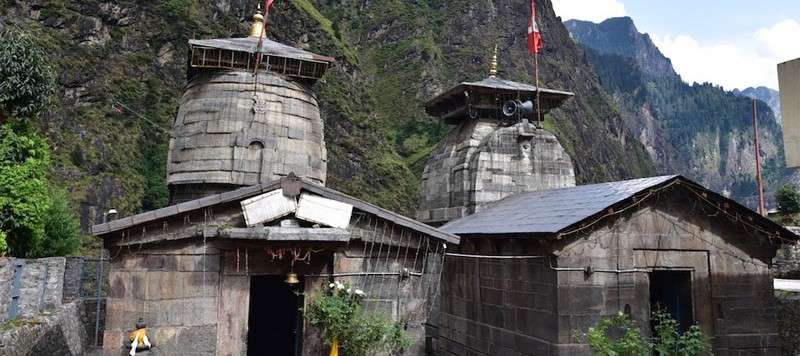
Dhyan Badri Temple, Joshimath
2 Days Dhyan Badri, Urgam Valley, Chamoli District, Uttarakhand
1 Rating
About Dhyan Badri Temple, Joshimath
Dhyan Badri Temple: The Serene Abode of Meditation and Devotion
Located amidst the breathtaking beauty of the Garhwal Himalayas in the state of Uttarakhand, India, the Dhyan Badri Temple stands as a tranquil haven for seekers of spirituality and peace. Nestled in the picturesque village of Urgam, the temple holds immense significance as one of the Panch Badri temples, a group of five ancient temples dedicated to Lord Vishnu.Historical Significance:
Dhyan Badri Temple has a rich history that dates back to the time of the Mahabharata, one of the great Indian epics. It is believed that after the conclusion of the epic war, the Pandavas embarked on a pilgrimage to seek Lord Vishnu's blessings for their sins committed during the war. Each of the Pandavas, Yudhishthira, Bhima, Arjuna, Nakula, and Sahadeva, installed five different forms of Lord Vishnu in five distinct locations, which came to be known as the Panch Badri temples. Dhyan Badri is said to be the place where Bhima meditated and sought forgiveness.Architectural Marvel:
The Dhyan Badri Temple showcases exquisite architecture that reflects the ancient Indian craftsmanship. Constructed in the traditional Garhwali style, the temple's structure is adorned with intricate carvings and sculptures, depicting various mythological stories and deities. The sanctum sanctorum houses the idol of Lord Vishnu in a meditative posture, showcasing the significance of introspection and inner peace.Surrounded by lush greenery and snow-capped peaks, the temple offers a breathtaking view of the Himalayan landscape. The serene atmosphere, coupled with the soothing sounds of chanting and bells, creates a sublime ambiance that draws visitors into a state of tranquility and spiritual awakening.
Spiritual Significance:
Dhyan Badri Temple is revered by devotees as a place of deep meditation and self-realization. It is believed that intense devotion and meditation at this sacred site can lead to spiritual enlightenment and inner transformation. Pilgrims from far and wide visit the temple to seek solace, meditate, and attain a connection with the divine.The temple also holds significance for yoga practitioners and spiritual seekers, who are drawn to its serene environment and the aura of spirituality that surrounds it. Many devotees choose to undertake arduous treks through the scenic Himalayan trails to reach the temple, viewing the journey as a test of their determination and dedication.
Festivals and Celebrations:
The Dhyan Badri Temple comes alive during various religious festivals celebrated with great fervor and devotion. One of the most prominent festivals is the Badri-Kedar Festival, which is dedicated to Lord Vishnu and Lord Shiva. During this festival, the temple is adorned with colorful decorations, and devotees gather to offer prayers, perform rituals, and partake in cultural performances.Another significant celebration is the Maha Shivaratri, a festival dedicated to Lord Shiva. Devotees throng the temple premises, engaging in prayers, meditation, and chanting hymns throughout the night. These festivals not only offer a glimpse into the rich cultural heritage of the region but also provide a platform for spiritual seekers to come together and celebrate their shared devotion.
Exploring the Surroundings:
Apart from its spiritual significance, the region surrounding Dhyan Badri Temple offers a plethora of natural beauty and adventure opportunities. The village of Urgam is known for its stunning meadows, gushing waterfalls, and vibrant flora. Travelers can indulge in trekking expeditions to nearby destinations such as Kalpeshwar, Satopanth Tal, and the Valley of Flowers, which are known for their breathtaking landscapes and diverse wildlife.Visiting Dhyan Badri Temple:
Dhyan Badri Temple is located approximately 15 kilometers from the town of Joshimath in Uttarakhand. The nearest airport is Jolly Grant Airport in Dehradun, which is well-connected to major cities in India. From Dehradun, one can hire a taxi or take a shared cab to reach Joshimath. Regular bus services are also available from nearby towns.It is advisable to plan the visit during the summer months (April to June) when the weather is pleasant and conducive to trekking. The monsoon season (July to September) should be avoided due to heavy rainfall and the risk of landslides. Winters (October to March) can be extremely cold and snowy, making it difficult to access the temple.
Firstrek Business Today, 2:38
Really Awesome services, they porovide to their customers. You must try this place once.
Reply